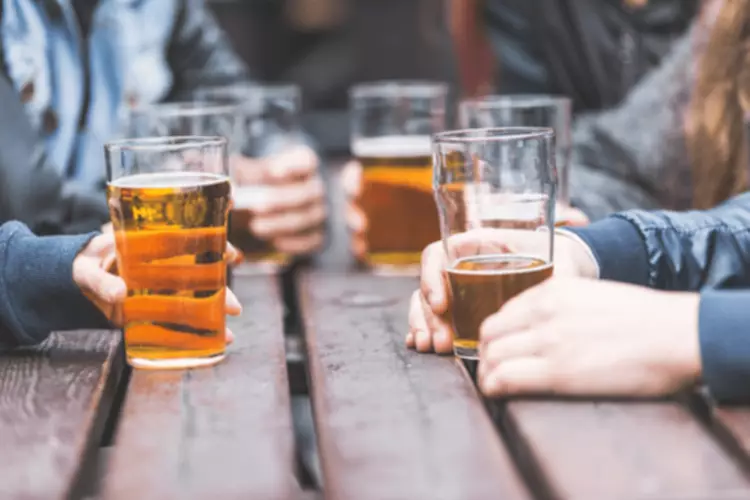
If you spend time with people who don’t drink or don’t drink often, you will also be less likely to drink. Socializing does not always mean going to the bar, playing drinking games, doing shots, or partying. Making friends who engage in a variety of activities without drinking can help you control or avoid drinking altogether.

Know Your Drinking Limits
- According to the National Survey on Drug Use and Health (NSDUH), there are about 414,000 adolescents aged 12 to 17 with AUD.3 People with a family history of alcohol addiction are four times more likely to develop alcohol addiction.
- However, all professionals involved in women’s health, including dietitians, nurses, and pharmacists, can address this issue and play a role in early detection through brief interventions.
- Putting those intentions out in the world can help you be more accountable.
- A psychology department research team led by Nancy Gonzales, executive vice president and university provost, used mediation to create a program that decreases alcohol use in teenagers who started drinking at a young age.
- Most alcoholism prevention programs focus on facilitating honest communication.
Concerns about body image, somatic distress, and eating disorders, which are also more common in women, can contribute to alcohol consumption. In extreme cases, this manifests as alcoholorexia (restricting food intake to enhance alcohol absorption), which poses significant neurologic risks. Anxiety and mood disorders are key contributors to alcohol consumption. By monitoring your child’s contacts with both peers and adults, you have the opportunity to reduce contact with individuals who encourage misbehavior and increase contact with individuals who encourage positive behavior.
- And 44% say alcohol helps them maintain social connections with friends.
- This fact sheet shows how these laws save lives and protect health.
- Drugs used for other conditions — like smoking, pain, or epilepsy — also may help with alcohol use disorder.
- The program reduces interparental conflict and decreases children’s anxiety and depression symptoms.
- If you’re a fire fighter or paramedic — or anyone else, for that matter — who wants to make sure you don’t fall into the grips of alcoholism, there are several strategies that can help you drink responsibly or even stay sober.
Preventing Excessive Alcohol Use

Among all drinkers who have heard of these studies, 41% say they plan to reduce the amount they drink either a lot (11%) or a little (30%) due to the findings. The key message is that alcohol should be discussed routinely, like diet, exercise, smoking, or medication use. Regular discussions with patients, regardless of their circumstances, help to prevent stigma. Emotional and sexual health should also what is Oxford House be addressed, with midwives and gynaecologists involved as needed.
- Let’s say your child posts a picture of themselves vaping on social media.
- After all, it’s easy to drink recklessly if you have friends to do it with you.
- Any reduction in alcohol intake at any stage, however, is beneficial.
- This group is intended for anyone who has current or previous struggles with alcoholism or alcohol abuse by creating opportunities for friendships, a support system and accountability partners to help you keep your drinking in check.
Patients
- In January 2020, more than 6 million people reportedly participated in Dry January, a campaign to reduce alcohol consumption organized by Alcohol Change UK.
- “For those who have access to and enjoy outdoor activities and other physical activity options, we know that physical activity, particularly in nature, can be very helpful in reducing anxiety and coping with other negative moods,” says Witkiewitz.
- According to the Substance Abuse and Mental Health Services Administration, cocaine is involved in nearly one in five overdose deaths and can lead to health effects including asthma, bowel decay, increased risk of HIV and increased risk of heart attack and stroke.
Resuming normal daily functioning after a night of heavy drinking can be problematic, especially with a hangover. This guide intends to educate clinicians and other stakeholders about the harms of using more than one substance and consideration for addressing concurrent substance use (CSU) and concurrent substance use disorders (CSUD). For example, when out at the bar with coworkers, don’t spend all night drinking.

Setting Rules and Educating on Consequences
Typically, alcohol use is initiated in adolescence, peaks in young adulthood, and then gradually declines over the course of adulthood. Alcohol is a psychoactive substance with immediate effects on the brain. Repeated use can change the way your brain functions and cause alcohol addiction.3 Preventing alcoholism can help you avoid long-term, life-altering consequences. Overall, 52% of Americans ages 21 and older say they’ve heard about studies showing that drinking alcohol can increase a person’s risk of cancer. Routine drinkers and those who drink monthly are somewhat more likely than those who drink only a few times a year or never to have heard of these findings. Public health messaging on alcohol consumption among women primarily addresses pregnancy and breastfeeding, often overlooking the broader lifelong health risks.
Recommendations for health care settings

Similarly, monitoring behaviors increase your knowledge of the content with which your teen is engaging online. First, you can set limits on the types of shows your child is watching or long term effects of alcohol the accounts they are following. Second, you can talk to your child about the content they are consuming and correct any inaccuracies or misconceptions.
